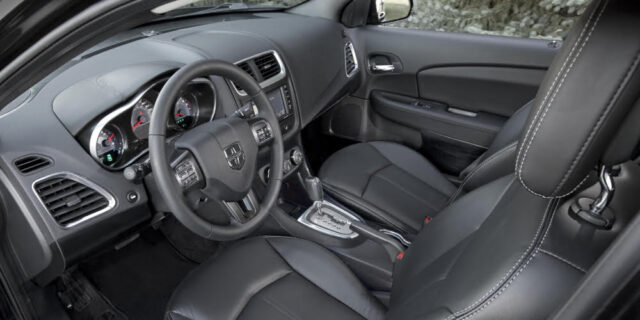Experiencing a no-spark issue in your Dodge vehicle can be frustrating, especially if you’re unsure how to tackle the problem. This guide will help you understand the causes, symptoms, diagnostic methods, and step-by-step solutions to fix the “no spark” issue, commonly referred to as “how to dodge in sparking zero.” Whether you own a gasoline vehicle, diesel vehicle, or electric vehicle, this guide is tailored for amateur mechanics who want to get their Dodge back on the road.
Understanding the No Spark Issue
The ignition system is crucial for starting your vehicle. If there’s no spark, the engine won’t ignite the air-fuel mixture, and your car won’t start. The “sparking zero” issue means that the spark plugs aren’t firing as they should.
Causes of No Spark Issues
- Faulty Spark Plugs: Worn or damaged spark plugs can’t produce the necessary spark.
- Bad Ignition Coils: These transform the battery’s voltage to the high voltage needed to create a spark.
- Defective Crankshaft Position Sensor: This sensor monitors the position and rotational speed of the crankshaft.
- Malfunctioning Ignition Control Module: Controls the spark generation and timing.
- Wiring Problems: Damaged wires or poor connections can interrupt the ignition process.
- Blown Fuses: Fuses protect electrical circuits; a blown fuse can cut power to the ignition system.
Symptoms of No Spark Issues
- Engine Cranks but Doesn’t Start: The starter engages, but the engine doesn’t fire up.
- No Voltage at Spark Plugs: Testing shows no electrical current reaching the plugs.
- Backfiring: Unburned fuel ignites in the exhaust system.
- Check Engine Light: May illuminate due to related sensors failing.
Diagnostic Methods
Step 1: Safety First
- Park on a flat surface and turn off the engine.
- Remove the key from the ignition.
- Disconnect the negative terminal of the battery to prevent electrical shocks.
Step 2: Inspect Spark Plugs
- Locate the Spark Plugs: Refer to your Dodge’s manual.
- Remove a Spark Plug: Use a spark plug socket and wrench.
- Examine the Plug: Look for signs of wear, damage, or fouling.
- Test for Spark:
- Reattach the spark plug to the ignition coil.
- Ground the spark plug against the engine block.
- Have someone crank the engine.
- Observation: If there’s no spark, the plug or coil may be faulty.
Step 3: Check Ignition Coils
- Locate Ignition Coils: Usually found on top of the engine.
- Test with a Multimeter:
- Set the multimeter to the ohms setting.
- Check the primary and secondary resistance.
- Compare Readings: Refer to the manufacturer’s specifications.
- Replace if Necessary: Faulty coils need replacement.
Step 4: Examine the Crankshaft Position Sensor
- Locate the Sensor: Typically near the crankshaft pulley.
- Inspect for Damage: Look for cracks or broken wires.
- Test the Sensor:
- Use a multimeter to check resistance.
- No Reading: Indicates a faulty sensor.
Step 5: Assess the Ignition Control Module
- Find the Module: Location varies; check the manual.
- Visual Inspection: Look for signs of overheating or corrosion.
- Module Testing:
- Some modules can be tested with a multimeter.
- Others may require professional equipment.
Step 6: Inspect Wiring and Fuses
- Check All Relevant Fuses: Use the fuse diagram in your manual.
- Inspect Wiring Harnesses: Look for frayed wires or loose connections.
- Repair as Needed: Replace damaged wires or fuses.
Step-by-Step Solutions
Replacing Faulty Spark Plugs
- Purchase Correct Plugs: Consult your manual for specifications.
- Gap the Plugs: Ensure the gap matches manufacturer recommendations.
- Install New Plugs:
- Thread by hand to avoid cross-threading.
- Tighten with a torque wrench to specified settings.
Replacing Ignition Coils
- Disconnect Battery: Always start by disconnecting the negative terminal.
- Remove Old Coil:
- Disconnect electrical connector.
- Unscrew mounting bolts.
- Install New Coil:
- Place the new coil in position.
- Tighten bolts and reconnect the connector.
Replacing the Crankshaft Position Sensor
- Disconnect Sensor Connector: Carefully remove the electrical connection.
- Remove Mounting Bolt: Use the appropriate socket.
- Install New Sensor:
- Place it in the correct position.
- Tighten the bolt and reconnect the wiring.
Replacing the Ignition Control Module
- Remove Old Module:
- Disconnect all electrical connections.
- Remove mounting screws.
- Install New Module:
- Secure it with screws.
- Reconnect all wires according to the diagram.
Repairing Wiring Issues
- Identify Damaged Wires: Look for burns, cuts, or corrosion.
- Cut Out Bad Sections: Use wire cutters.
- Splice in New Wire:
- Use connectors or soldering.
- Seal with heat-shrink tubing.
Tips for Diesel and Electric Dodge Vehicles
- Diesel Vehicles: While they don’t use spark plugs, they rely on glow plugs and fuel injectors. Check these components if experiencing starting issues.
- Electric Vehicles: Focus on the battery pack, electric motor, and related control modules. Specialized equipment may be needed.
When to Seek Professional Help
If you’ve followed these steps and still face issues, it may be time to consult a professional mechanic. Electrical systems can be complex, and specialized diagnostic tools may be required.
Preventative Maintenance
- Regular Inspections: Check spark plugs and ignition components periodically.
- Use Quality Parts: Always replace with OEM or high-quality aftermarket parts.
- Keep It Clean: Dirt and debris can affect electrical connections.
Additional Resources
For more information on how to dodge in sparking zero and related issues, consider visiting:
- Dodge Official Website: For manuals and official guidelines.
- Wikipedia – Ignition System: To understand how ignition systems work.
- Your Mechanic: For professional advice and tutorials.
Conclusion
Fixing a no-spark issue in your Dodge doesn’t have to be daunting. By understanding the potential causes and following this step-by-step guide, you can diagnose and resolve the “how to dodge in sparking zero” problem. Remember to prioritize safety and don’t hesitate to seek professional assistance if needed.
